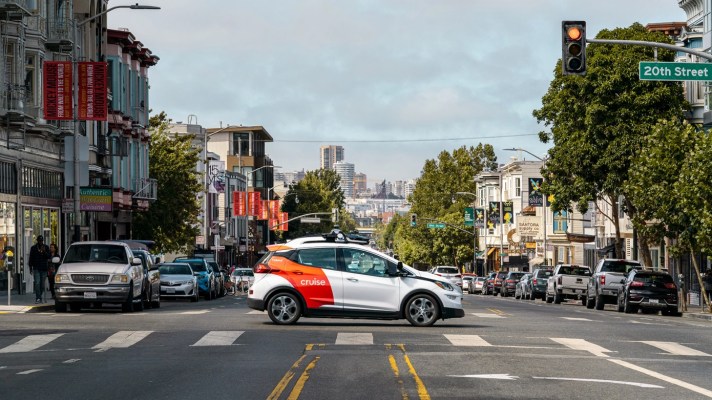GM’s self-driving unit Cruise filed with federal regulators a voluntary recall to update the software in 300 robotaxis after one struck the back of a city bus in San Francisco.
Cruise said in a report with the National Highway Transportation Safety Administration that it initiated the recall because in rare circumstances the software could inaccurately predict the movement of “articulated” vehicles.
There were no reported injuries in the low-speed crash on March 23, in which a Cruise robotaxi rear-ended an articulated San Francisco Municipal Transit Authority bus. The Cruise self-driving software failed to accurately predict the movement of the bus and struck the back after braking too late. Cruise said the incident resulted in minor damage to the front fender of the AV and caused no injuries.
“Fender benders like this rarely happen to our AVs, but this incident was unique,” Cruise co-founder and CEO Kyle Vogt wrote in a blog posted Friday. “We do not expect our vehicles to run into the back of a city bus under any conditions, so even a single incident like this was worthy of immediate and careful study.”
Vogt went on to explain how Cruise engineers responded to the crash and provided some detail on its investigation. The company updated the software March 25 and has said the issue has been corrected.
Last September, Cruise reported a software recall and update in 80 of its robotaxis following a crash in June. The crash, which resulted in minor injuries to two riders, received national attention because it occurred a day after Cruise received the final permit from California regulators to commercialize its driverless robotaxi service.
Cruise said in the regulatory filing that the software recall was issued because of a “rare circumstance” in which the automated driving system caused the driverless robotaxi — which did not have a human safety driver behind the wheel — to hard brake while making an unprotected left turn.
